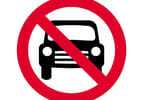Just over a month ago, before the coronavirus wave, many of us sat in our offices surrounded by colleagues, engaged in deep discussions about how best to leverage the increasing demand in hotels, سفر ۽ سياحت this year. As per the UN World Tourism Organization’s (UNWTO’s) forecasts from earlier this year, international tourist arrivals were expected to grow by 4% in 2020, which is not as great as the growth seen in 2017 (7%) and 2018 (6%), but it was still enough to continue fueling the tourism industry, which contributes about 10.4% of the global GDP and approximately 319 million jobs.
We were blissfully unaware of the looming threat of the COVID-19 global pandemic. In fact, several parts of the world failed to take notice of this crown-shaped virus that was about to bring everything to a grinding halt, until March 11, when the World Health Organization (WHO) officially announced it as a pandemic. Little did we know that the world we would wake up in tomorrow would be unrecognizable, and life as we know it would cease to exist.
Highways have emptied, aircrafts have been grounded, cities that never slept have now fallen into deep slumber, and economic giants have been brought to their knees. Amidst all this quiet chaos, the travel and tourism industry finds itself caught in the eye of the storm as one of the worst-hit industries. The very act of travel is known to contribute to the spread of the coronavirus, which is why it has now rapidly spread to over 206 countries across the world triggering the imposition of strict travel restrictions by several governments.
As the tourism industry counts its losses, UNWTO estimates that the pandemic will result in a drop of about 440 million international tourist arrivals, amounting to a 30% decline in international tourism receipts. To put this into perspective, the tourism industry will lose about US$450 billion in 2020, and 75 million people globally will be left jobless. Depending on how the situation evolves, UNWTO may still further revise these figures.
With all the uncertainty around, the industry braces itself for the only certain outlook – change. We are about to witness massive shifts in travel and tourism patterns and consumer behavior.
Corporate travel vs. leisure travel
The need for social distancing will mean that it will take a while before travelers feel safe going to a crowded airport and boarding flights. The recovery may be quicker for corporate travel due to it being relatively more essential in nature, whereas non-essential travel for leisure might have a longer recovery curve.
Domestic travel vs. international travel
Once leisure travel does take flight again, travelers will probably wish to test the waters with destinations closer to home, possibly even within driving distance. Singaporeans have reacted favorably to staycation offers within the city-state.
Budget vs. luxury
Even though luxury and upper upscale hotels are the ones hurting the most right now, they have the potential to recover at a relatively faster pace. Safety and cleanliness will be top of mind for travelers when choosing a hotel, which is where the meticulous standards of luxury hotels will play a key role.
Given the potential shifts that the industry is anticipating, there are a few areas that hotels may want to pay close attention to in order to ensure a smooth transition back to operations.
Source markets
As a result of travelers “going local,” several hotels will need to revisit their key source markets. In case hotels were heavily dependent on a particular source market, which they don’t expect pick-up from in the near future, they will need to explore other potential source markets as the domestic demand on its own may not necessarily be enough to replace the overseas demand. As an independent hotel, this may seem daunting, but it would certainly help to get in touch with the destination’s tourism board and understand their plans in order to align a strategy accordingly.
مارڪيٽ جا حصا
As and when hotels re-open, commercial teams will need to analyze who really is coming through the doors in the first few days. This will be imperative to quickly identify shifts in market segments and tailor the strategy accordingly.
Budget & resource allocation
Undoubtedly, based on the shifts in source markets and market segments, hotels will need to go back to the drawing board and revisit all the macro and micro strategies for the year. Starting from shuffling the sales team’s portfolios to adjusting marketing plans for the year, everything would need to be looked at again.
Diversification of revenue streams
Until rooms revenue climbs back up to financially viable levels (and it will), hotels will need to think outside the box and look at diversification of their revenue streams. A shift in focus would be required with commercial teams getting hands-on with food and beverage (F&B), conferences & banquets, and spas, etc. Several luxury hotels have introduced home-delivery services including the delivery of their signature dishes, desserts, and even their wine collection.
Pricing
Historically, hotels that have opted for a blanket price-drop after any crisis have generally struggled to regain average daily rate (ADR) once demand levels increase. However, this crisis is unlike any other, and we may have to keep in mind that a lot of those willing to travel in the near future may also be hurting financially, and a discount might just incentivize them to travel. In order to avoid a sustained price drop, hotels should certainly maintain public rates on their own channels as well as OTAs but can look to engage in flash sales without compromising their brand perception.
Operational structures
With cash flows in jeopardy, hotels will have to look at leaner operational structures, at least temporarily. Several larger hotel chains looking to preserve cash flow have rolled out furlough schemes for hundreds of thousands of their employees.
At this point, how this pandemic will end is anyone’s guess. China, where the pandemic started and the first country to have claimed to have the COVID-19 situation under control and to have slowly eased travel restrictions, is experiencing early signs of recovery with a cautious increase in flight and hotel bookings, representing a glimmer of hope for the rest of the world.
In recent years, the global travel and tourism industry has faced many crises, including terrorist attacks, political instability, natural disasters, and economic slowdowns, to name a few. Nevertheless, the industry has taken all these in stride. With resilience, it has fought and gotten back up. Similarly, this too shall pass.
هن آرٽيڪل مان ڇا وٺو:
- As per the UN World Tourism Organization's (UNWTO’s) forecasts from earlier this year, international tourist arrivals were expected to grow by 4% in 2020, which is not as great as the growth seen in 2017 (7%) and 2018 (6%), but it was still enough to continue fueling the tourism industry, which contributes about 10.
- The very act of travel is known to contribute to the spread of the coronavirus, which is why it has now rapidly spread to over 206 countries across the world triggering the imposition of strict travel restrictions by several governments.
- In case hotels were heavily dependent on a particular source market, which they don't expect pick-up from in the near future, they will need to explore other potential source markets as the domestic demand on its own may not necessarily be enough to replace the overseas demand.























